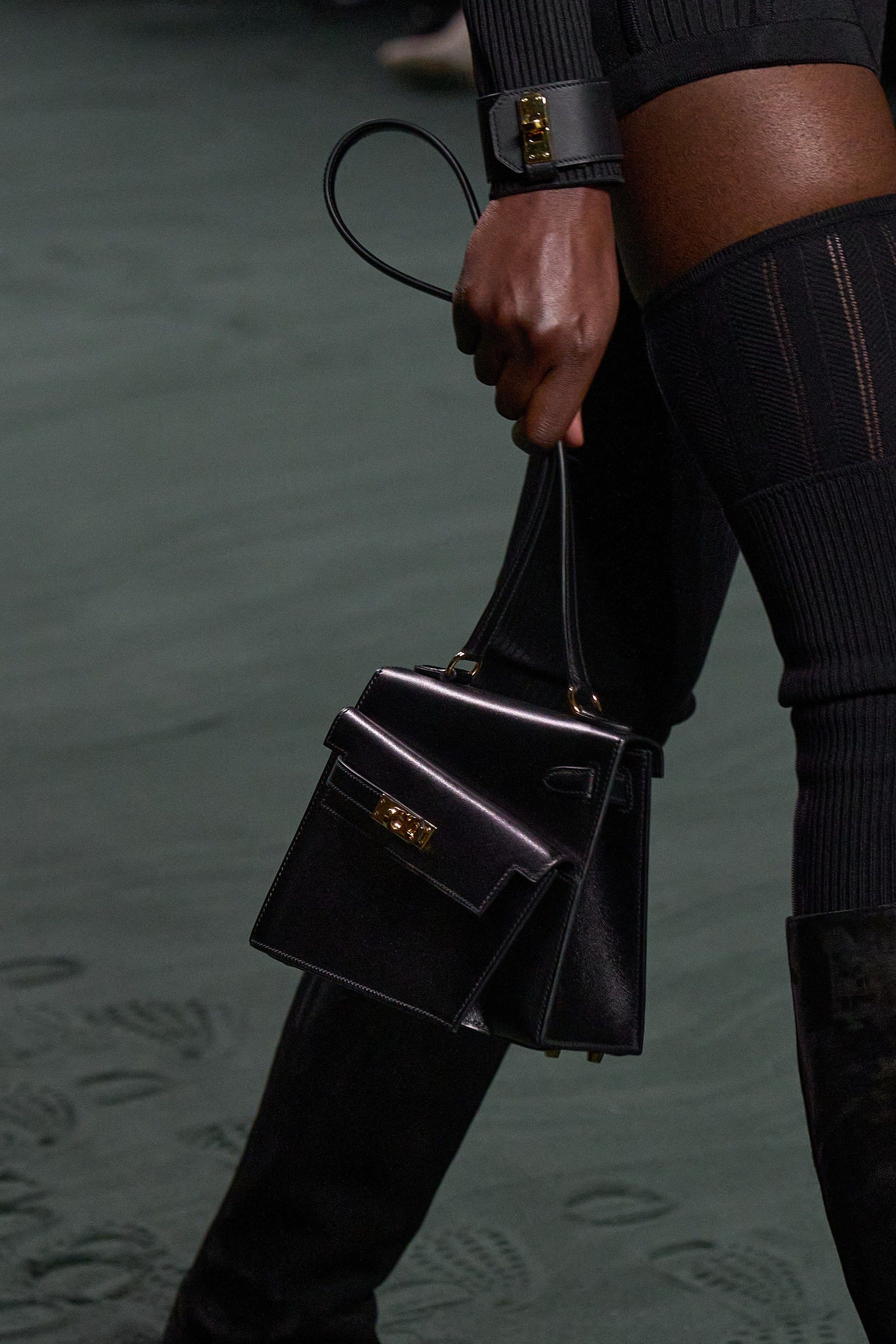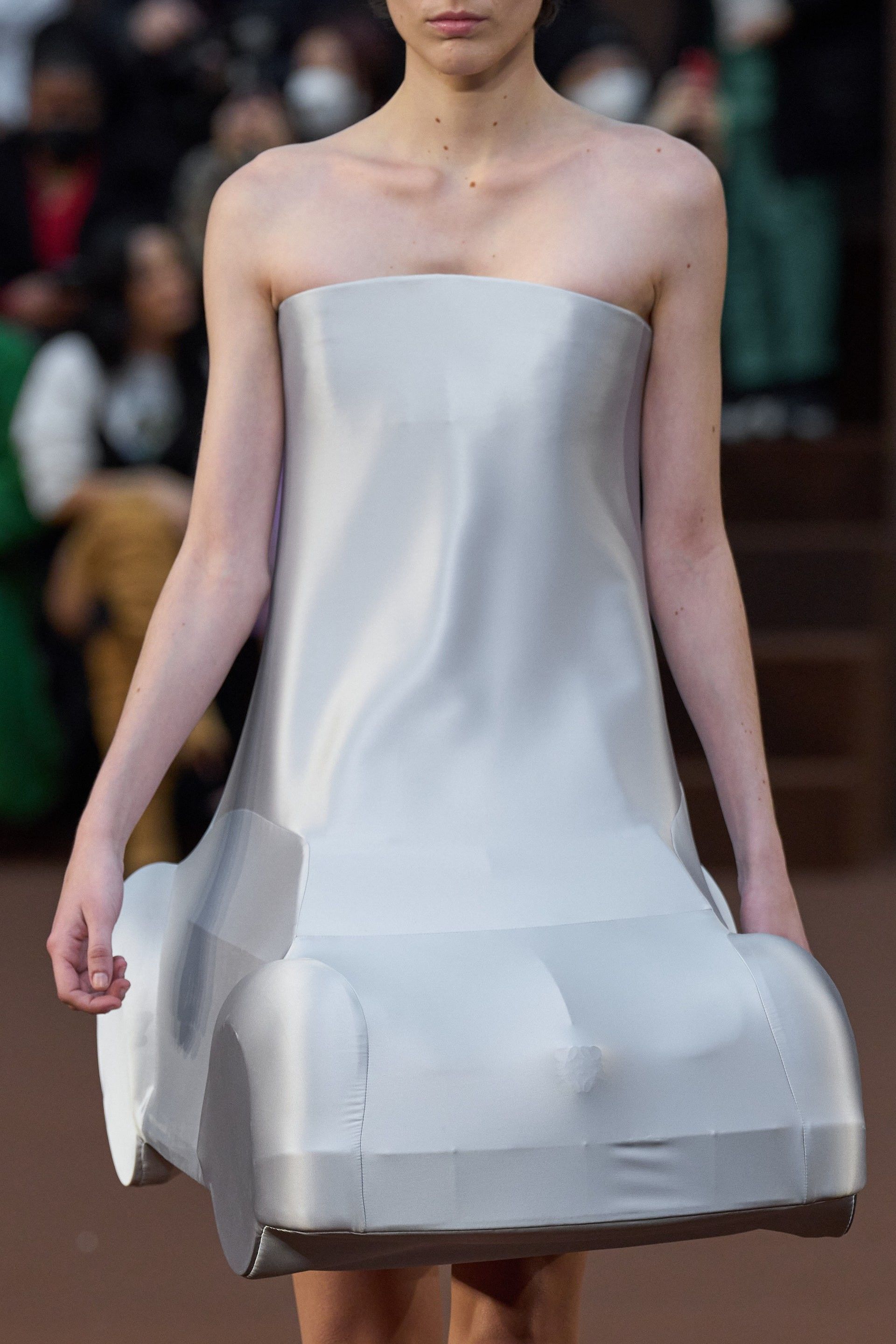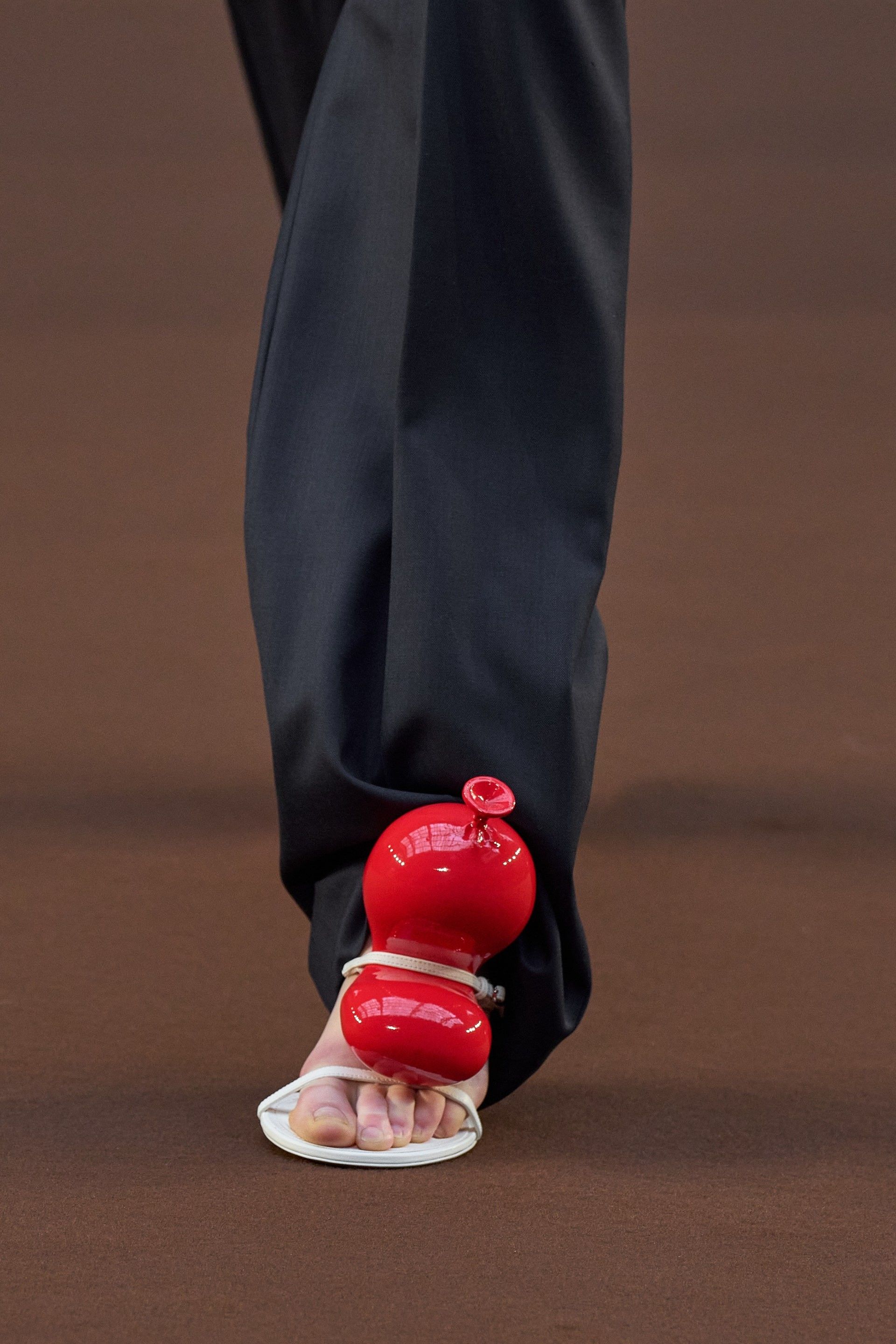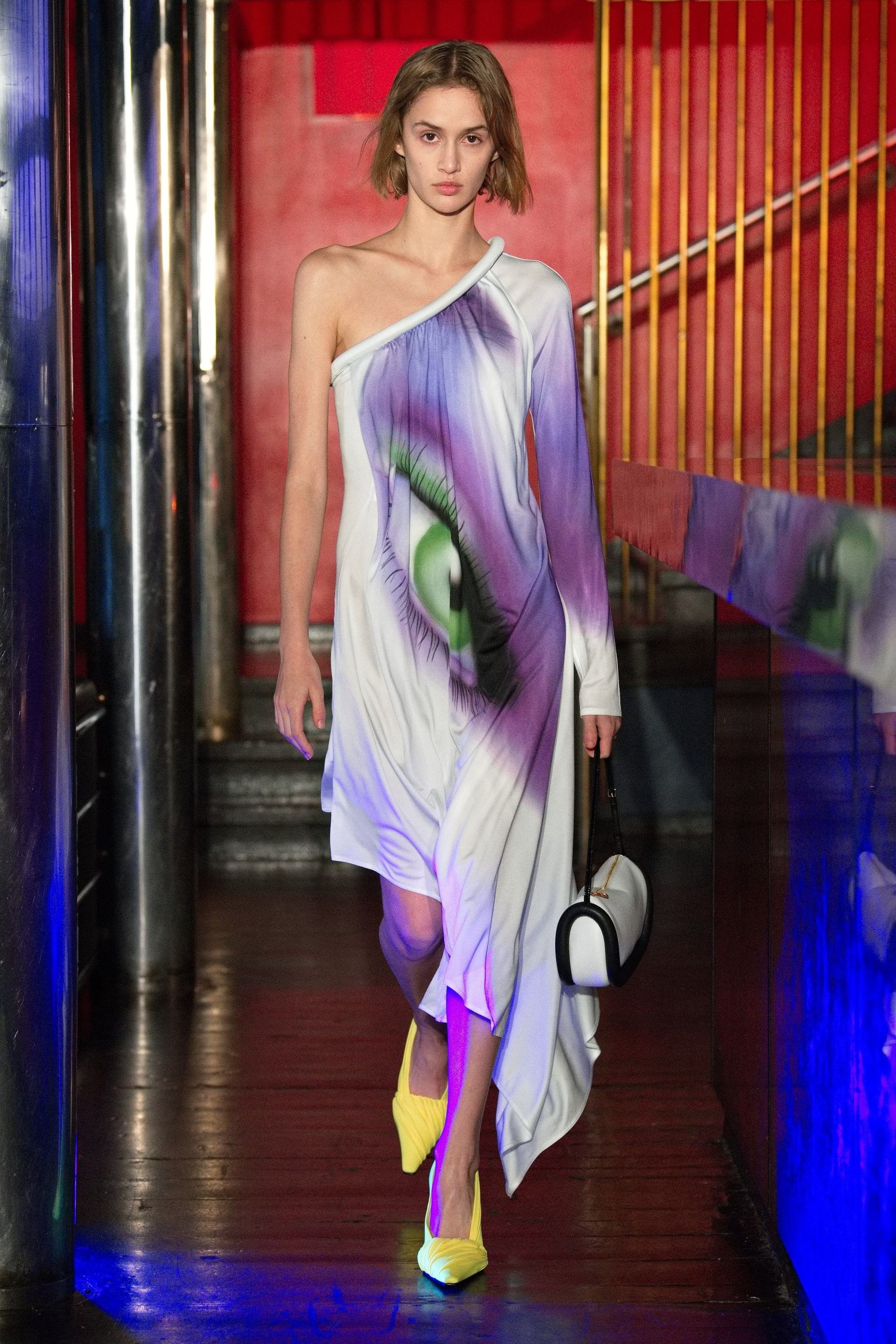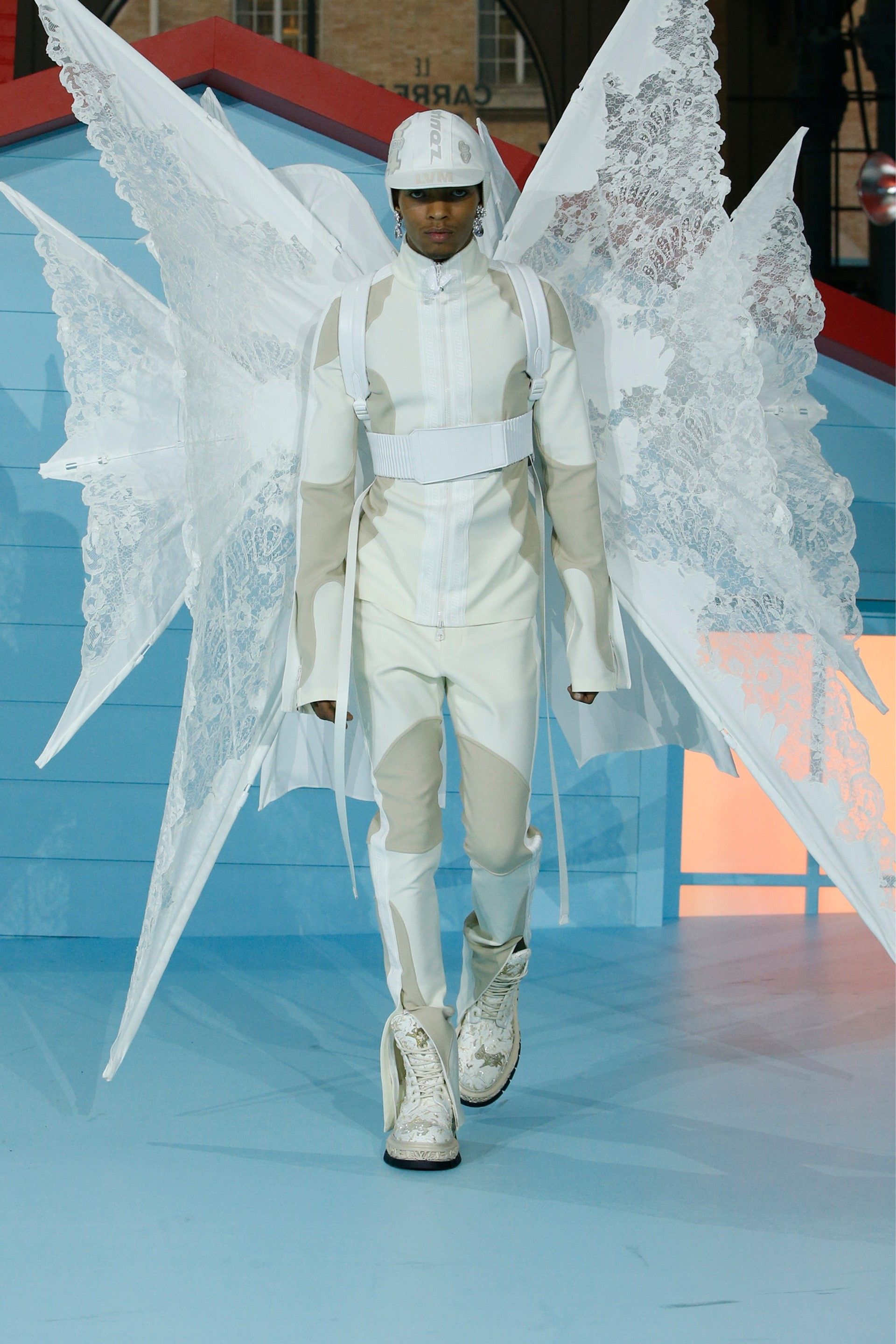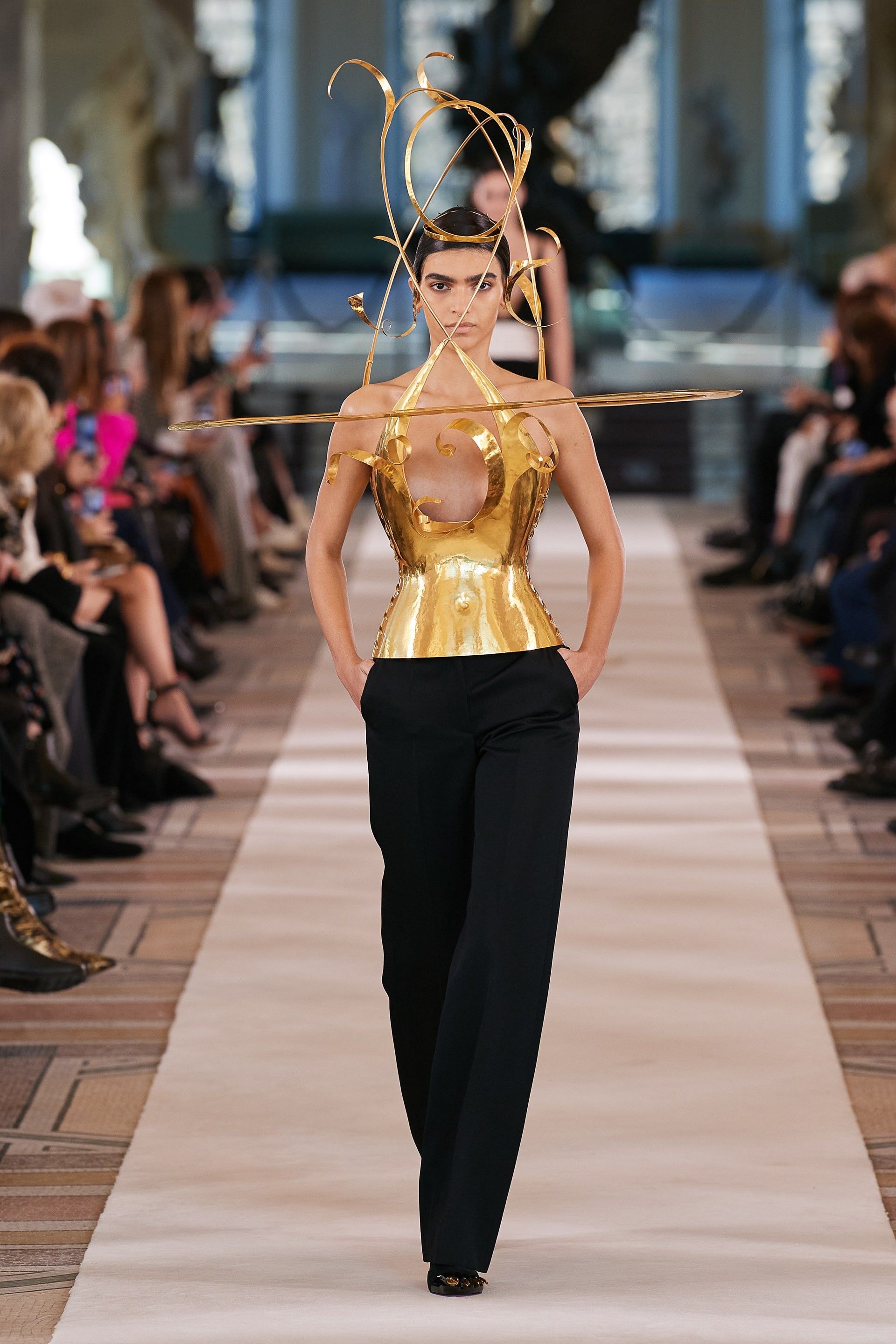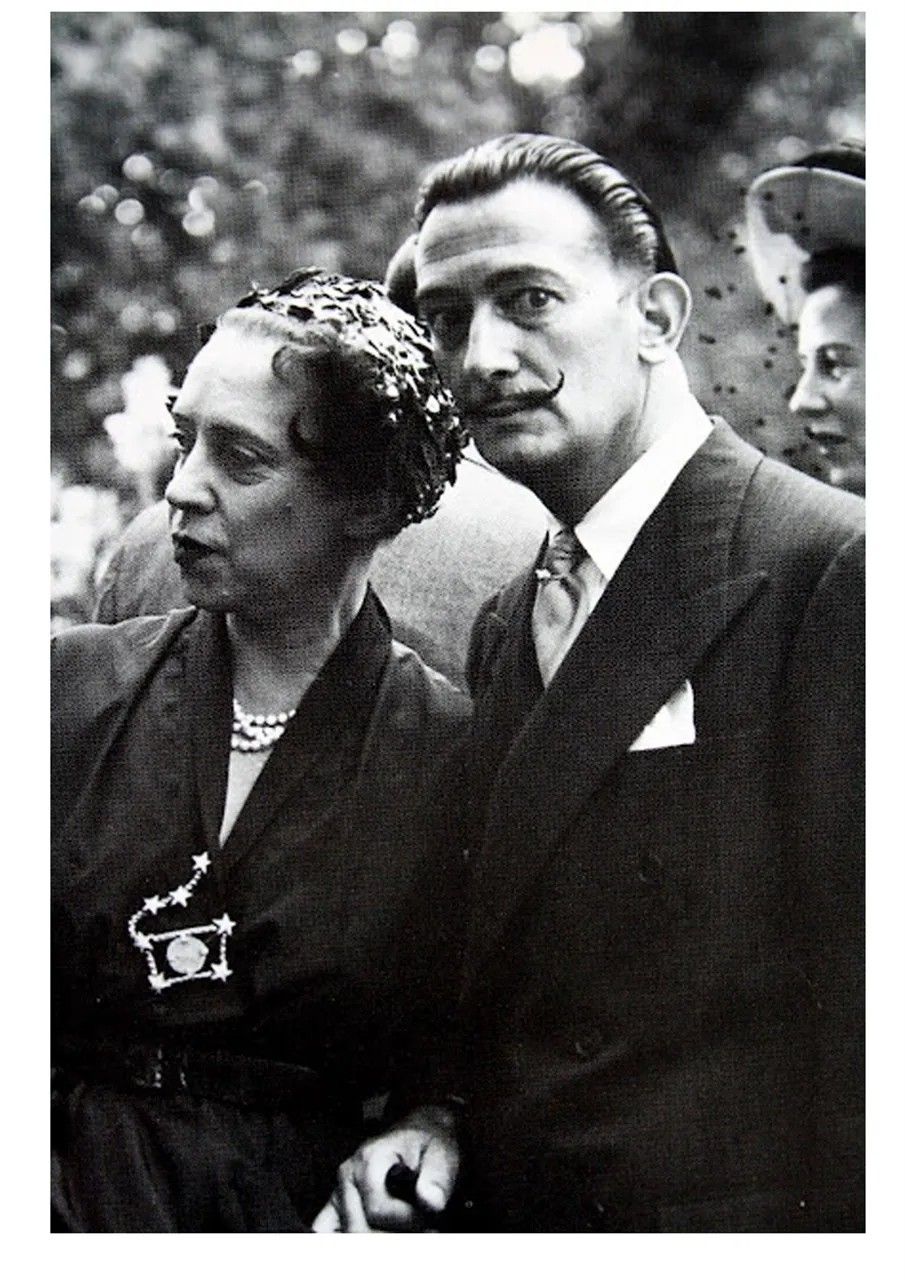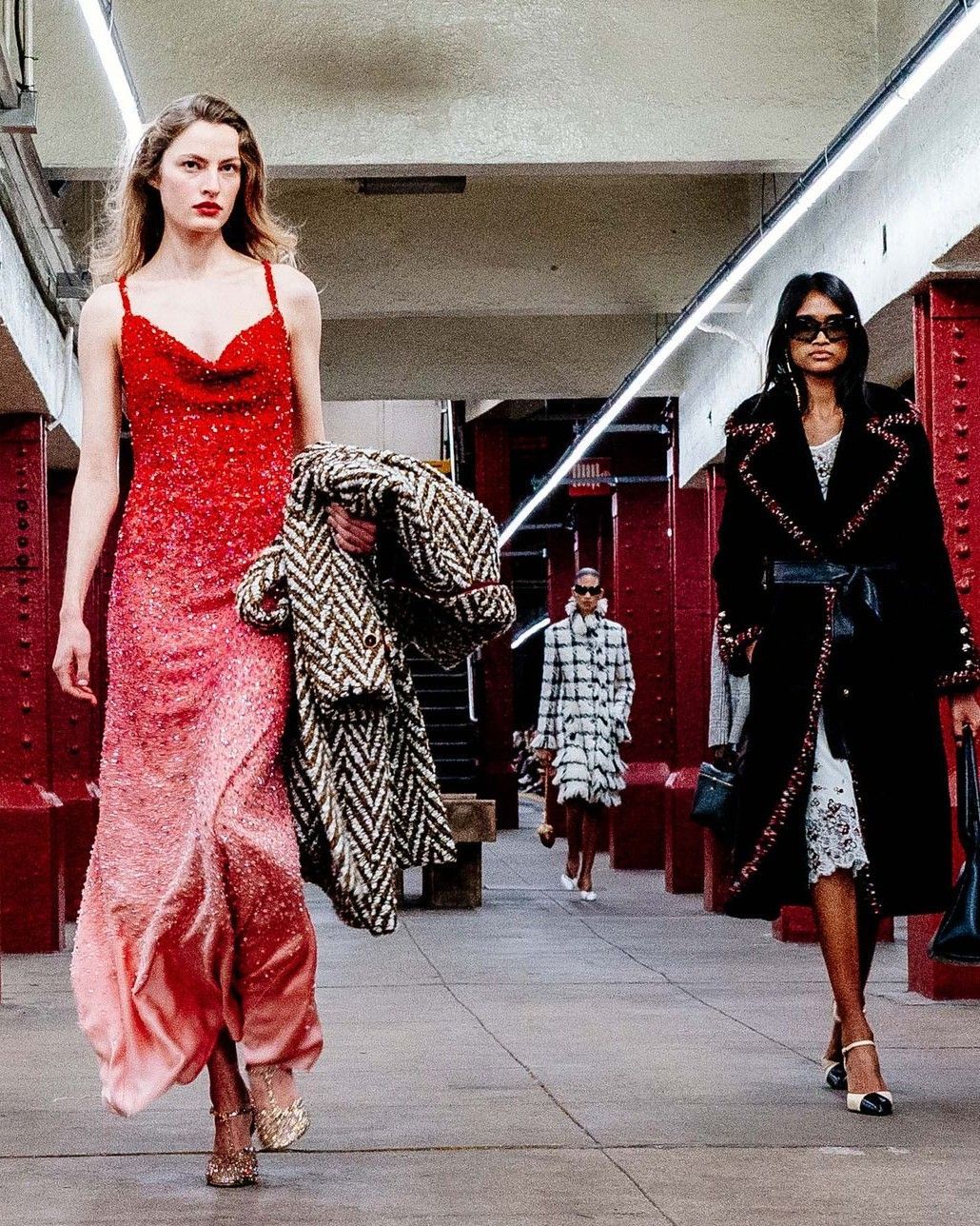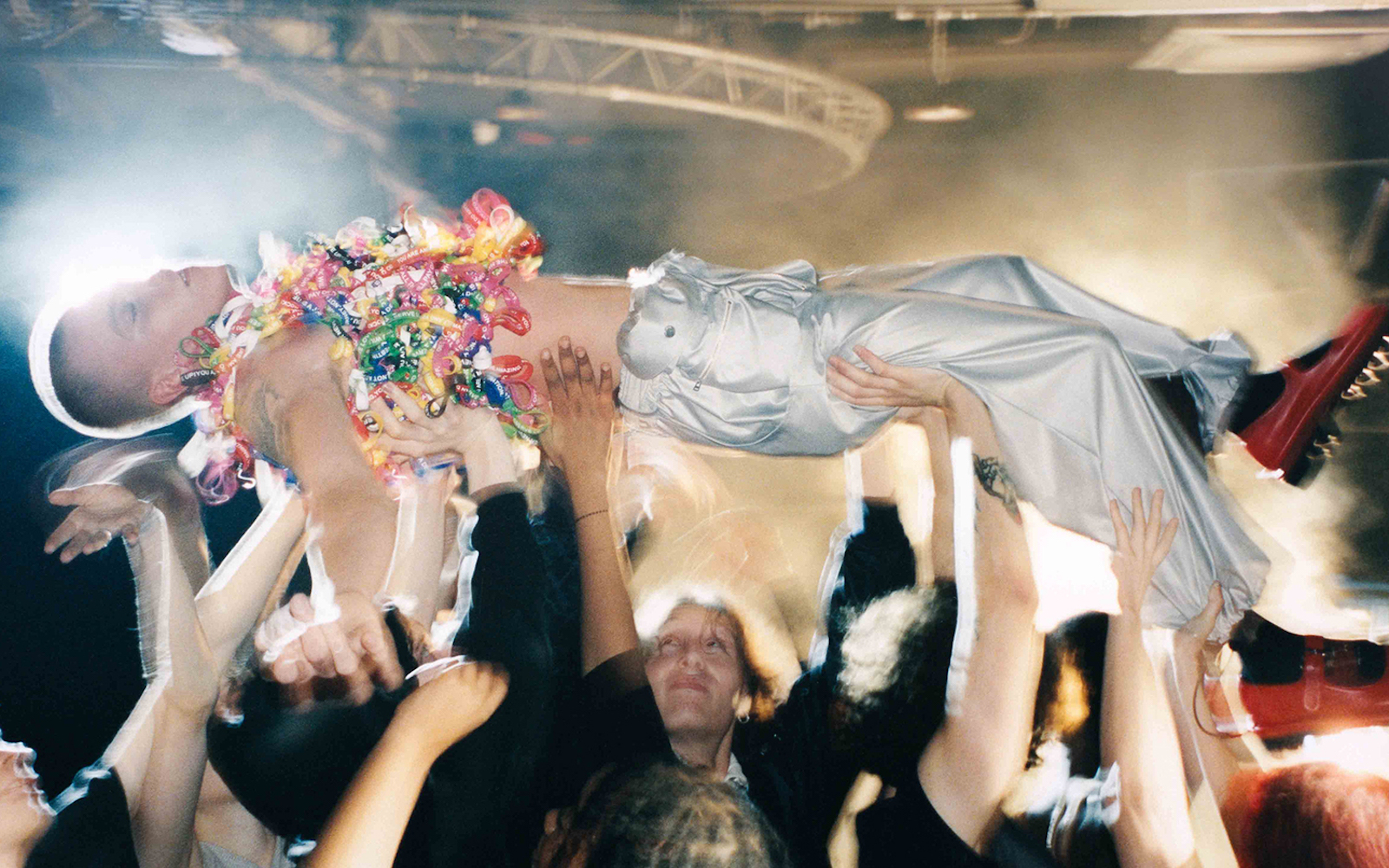
The return of surrealism on the catwalk Balloons, golden horns, illusionistic clothes - never as today fashion likes to dream
During the last fashion month, a different approach to design made its way on the latest catwalks, made of vivid colors and distorted lines, of an aesthetic closer to art than to clothing in the strict sense and for this reason difficult to wear, but able to catalyze all the attention on itself. At Hermès the models passed through de Chirico-style colonnades clutching lopsided Kelly Bags, VTMNTS revived Magritte's clouds printed on double-breasted dresses and following a trail already explored by Virgil Abloh at Louis Vuitton, Glenn Martens for Y/Project paid homage to the Gaultier of 1996 by superimposing silhouettes of female and male bodies in an optical illusion of naked bodies in motion, at Louis Vuitton the models had wings that looked like something out of a Bosch painting while Chanel's runway was a veritable mise en abime, a show within a show where the audience looked at tweed coats sitting on tweed stools clutching tweed invitations. While the pandemic trends of loungewear and uniform dressing still monopolize the fashion shows, making the encounter between fashion and everyday life more accessible than ever, in an exercise of escapism some designers wanted to catapult us into the realm of their imagination, but some of them stood out for a dreamy and dreamy interpretation of the latest collections: it is the neo-surrealism of Jonathan Anderson at Loewe and JW Anderson and Daniel Rosenberry at Schiapparelli.
Trapeze mini-dresses with a car trapped in the hem, shoes entirely sunk in a kind of galoshes and lots of balloons: red squashed between shoe straps or brown and beige cut like bras. Jonathan Anderson's runway show for Loewe was symbolically built around the 'twisting' of a balloon - «A balloon creates tension. It will pop. It won’t last forever», explained the designer - as well as a riot of artistic references from Meret Oppenheim to Lynda Benglis to the designer's longtime partner Anthea Hamilton. «I don't want things to look stereotypical, I don't want things to make sense» is instead the premise for the collaboration between J.W. Anderson and Run Hany based on the cult Korean cartoons of the '80s printed on bags and tops, a game through colors and prints that recalls the last catwalk of the brand in January, in which soccer clothing was interpreted in a "camp and theatrical" key with lots of moccasins in the shape of a bulb, tops reminiscent of the Muppets and pochettes in the shape of a pigeon. In Schiaparelli the way out is the past, the creative director Daniel Roseberry who was able to make the symbols of the maison current in a collection built around the figure of the pagan priestess, an image that fits into the symbolic baggage of the maison, linked to astrology and onirism, in a procession of planets and rosaries that become votive objects destined to the cult of beauty. «After two years of thinking about the surreal, I found myself thinking about the empyrean instead: the sky as a place of escape from the chaos of the planet» said Roseberry.
Surrealism, the movement that transformed pre-World War II mass psychological tension into art in the late 1930s, has never been more unusually relevant than it is today. Born as a rebellion against the "rationalism" prevalent in pre-war European culture and politics, the Surrealists combined reality and fantasy into an "absolute reality, a surreality," as André Breton called it, in search of new modes of representation to better explore the newborn sicence of psychoanalysis and the unconscious - an intent that also united the artistic partnership between Elsa Schiaparelli and Salvador Dalì, which was one of the first examples of surrealist fashion within traditional French haute couture. Always an example. An avant-garde current that left its mark by influencing artists to come and entering the common imagination thanks, in addition to fashion, to events such as Marie-Hélène de Rothschild's Surrealist Ball of 1972, which remains in the annals as the most bizarre and opulent masquerade party since the Winter Palace Ball of 1903.
Today, however, surrealism has taken on a dual function: on the one hand, it is escapist and serves as a reaction to an increasingly convoluted and problematic world, in which previous categories of thought are subverted and, above all, in which tradition has been explored far and wide, opening the way to new attempts at expression and innovation; on the other, it reacts to the chaos of the world by reflecting and reworking it. Surreal clothes for surreal times one might say, capable of becoming the mirror of the chaos we perceive in the world, a response to the normality of convention but also as a result of the "collapse of meaning" in which a cap can be a bag, a pair of heels can include the hem of a pair of pants. And if in the post-Covid fashion scenario brands are asked to be more and more active on political and social issues, the response of designers like Jonathan Anderson and Daniel Rosenberry has been to sublimate the anxieties of the present in a liberating creative exercise that equates fashion with art.












































